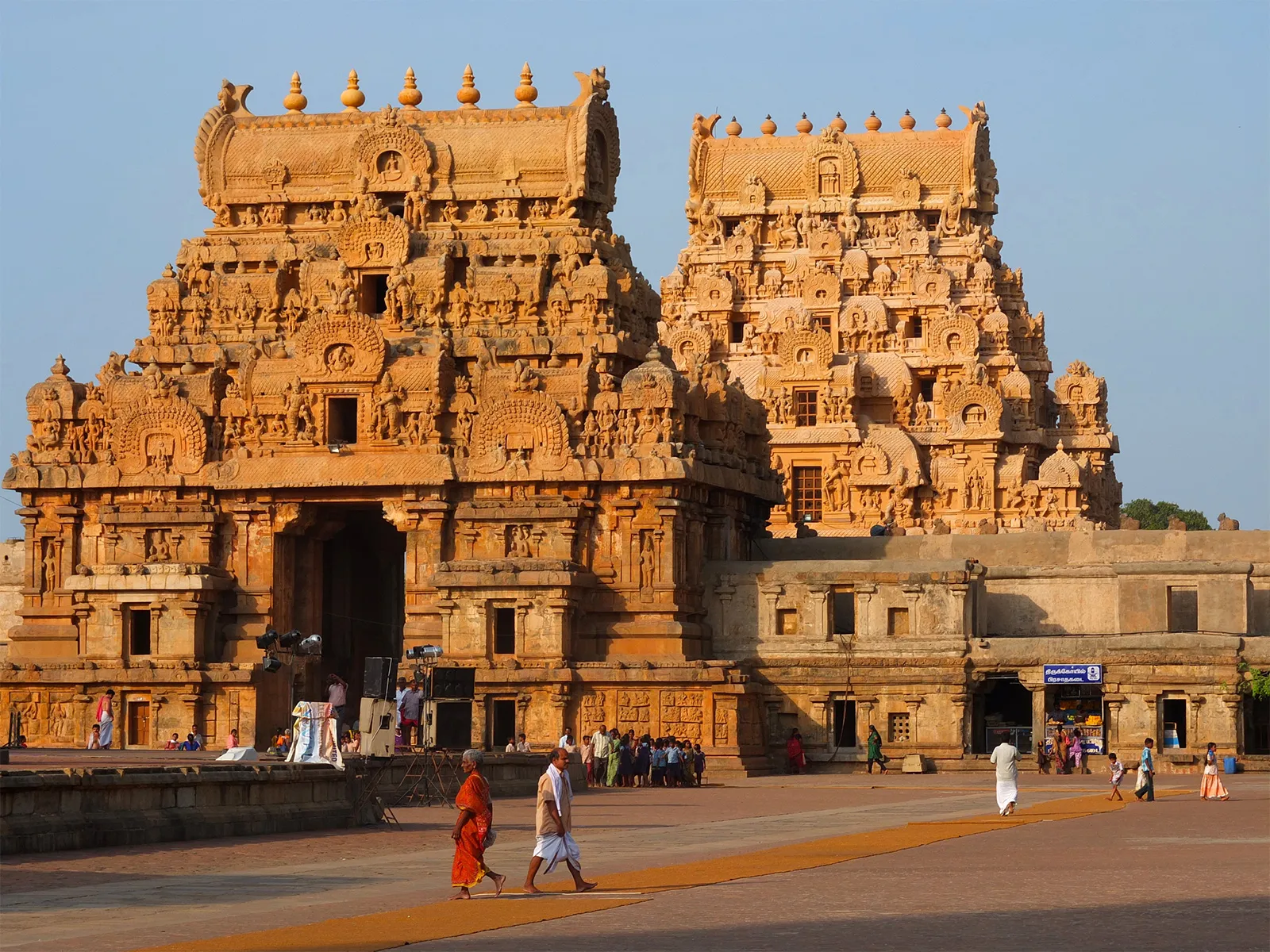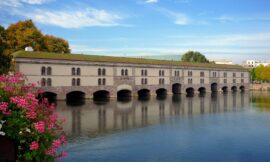Thanjavur, also known as Tanjore, stands as a testament to the cultural richness, historical significance, and artistic brilliance of the Chola dynasty in the southern Indian state of Tamil Nadu. Nestled on the fertile plains of the Cauvery Delta, Thanjavur has evolved into a city that seamlessly blends tradition and modernity while preserving its ancient heritage.
At the heart of Thanjavur’s cultural legacy is the Brihadeeswarar Temple, also known as the Big Temple, a UNESCO World Heritage site and one of the largest temples in India. Built by the Chola king Rajaraja I in the 11th century, this architectural marvel is dedicated to Lord Shiva. The temple’s towering vimana (temple tower) stands at over 66 meters, and its apex is believed to be carved out of a single stone. The intricate carvings, exquisite sculptures, and the colossal Nandi (bull) statue at the entrance are testament to the Chola dynasty’s mastery in temple architecture.
The Brihadeeswarar Temple is not only a place of worship but also a living museum showcasing the cultural and artistic achievements of the Chola dynasty. The temple’s annual festival, the Maha Shivaratri, attracts thousands of devotees, adding a vibrant and festive atmosphere to the ancient surroundings.
Thanjavur’s connection with classical arts is exemplified by the Brihadeeswarar Temple’s association with Bharatanatyam, a traditional Indian dance form. The temple’s inscriptions mention the existence of a dance hall, known as the Rajaraja Perunthirattu Mandapam, where performances were held to honor Lord Shiva. This historical link between the temple and Bharatanatyam has contributed to Thanjavur’s status as a cultural hub.
The Maratha rulers, who succeeded the Cholas, played a significant role in shaping Thanjavur’s cultural landscape. The Maratha Palace, also known as the Thanjavur Palace, is a sprawling complex that served as the official residence of the Maratha rulers, the Bhonsle dynasty. The palace complex houses the Saraswathi Mahal Library, one of the oldest libraries in Asia, which boasts a remarkable collection of ancient manuscripts and rare books. The palace also features the Art Gallery, exhibiting a diverse array of artifacts, paintings, and sculptures that provide insights into the region’s cultural heritage.
Thanjavur rose to prominence not only as a center for temple architecture but also as a hub for Carnatic music. The Thanjavur Quartet, a group of four brothers from the 18th century, made significant contributions to the development of Carnatic music and Bharatanatyam. Their legacy is celebrated through the annual Thyagaraja Aradhana, a music festival held in honor of Saint Thyagaraja, one of the quartet members, at the Brihadeeswarar Temple.
The town is renowned for its Tanjore painting, a traditional art form that originated during the Nayak and Maratha periods. Characterized by vibrant colors, intricate details, and the use of gold leaf, Tanjore paintings often depict deities, mythological themes, and royal portraits. Artisans in Thanjavur continue to preserve and practice this ancient art form, contributing to the town’s reputation as a center for classical arts and crafts.
The town’s craftsmanship is also reflected in the making of Thanjavur dolls and the world-famous Thanjavur veena, a traditional South Indian musical instrument. These traditional arts and crafts continue to thrive, passed down through generations of skilled artisans who take pride in preserving their cultural heritage.
The proximity of Thanjavur to the fertile Cauvery Delta has made the region an agricultural powerhouse. The lush green fields surrounding the town not only contribute to the region’s economic prosperity but also add to the scenic beauty of the landscape.
In conclusion, Thanjavur stands as a cultural gem that echoes the legacy of the Chola dynasty and subsequent rulers. From the majestic Brihadeeswarar Temple to the artistic endeavors of the Marathas and the contributions to classical arts, Thanjavur has left an indelible mark on the cultural map of India. The town’s vibrant traditions, artistic pursuits, and historical monuments continue to draw visitors, making it a destination where the past and present converge in a harmonious celebration of heritage and creativity.



